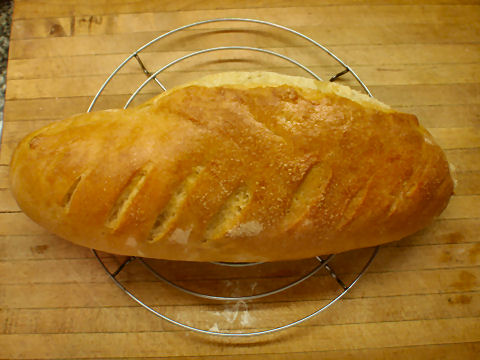“When distant and unfamiliar and complex things are communicated to great masses of people, the truth suffers a considerable and often a radical distortion. The complex is made over into the simple, the hypothetical into the dogmatic, and the relative into an absolute.”
– Walter Lippmann, Journalist

The writing of a cooking book is a difficult process, especially one which sets out to frame elementary principles. There are, of course, classics, many of which have gone through numerous iterations and revisions over the years. And, there are the new. Some of them worthwhile, others not. I have just meandered my way through one of the newest, a book which is of the worthwhile category, but with caveats. I hate to even have caveats, as the author is someone with whom I’m connected via various social-networking sites, and whose blog I enjoy reading. Yet, I have them.
The book, Ratio, by Michael Ruhlman, subtitled, “The Simple Codes Behind the Craft of Everyday Cooking”. Now, let’s start with the book itself – I don’t have a physical copy, I bought an electronic copy from Sony’s eBook Library – so it makes it a little hard to judge the aesthetics. Still, Sony purports that it is a straightforward reproduction – if that’s true, there are some problems with it – for one, the font is an odd one – with strange weighting and shading at various points. And, while that may be a simple matter of the electronic reproduction the one thing, pedantic as it may seem, that truly annoyed me throughout the book, is the lack of fractions. Other than ½ and ¼, the rest are composed of a superscripted numeral above the line, then a slash, and then a subscripted numeral below the line – not only does it make a fraction take up three characters, but it also extends them into the lines above and below. If this is indeed the font chosen for the book, it was a poor choice for a tome that’s filled with fractions – pick a font that includes them (or just use straightforward x/y style, 3 characters, but all on the same line). There are also no page numbers, at least in the electronic edition, making references to “see page XX” a crap-shoot. [Edit: I’ve picked up two other books from Sony’s eBook Library and both have the page numbers removed and the typeface seems odd. So I think it’s something they’re doing to the electronic editions as opposed to the way the books were originally published.]
Now, to the content, which is, of course, far more important. It’s well organized, well thought out, and well written. All great things. I love the introductory parts that lead us deftly into the premise of the book. I particularly like that Ruhlman is careful to iterate and reiterate that the concept of “ratios” as basic cooking formulas (this much flour to this much liquid yields this type of dough) is meant as a guideline and not as an absolute. But after the introductory part, that message gets lost. Certainly there are variations presented on each type of dough, sauce, etc. – though without much in the way of an explanation as to why, and what effect these variations will have – more of, “just try this”. There are several points where the message seems to be contradicted, with assertions that “this will always turn out”, “this is golden”, and the like. Not many, but enough to be noticeable. And then, at the end, he reiterates that really, truly, these are just guidelines.
What’s missing, for me, and it’s probably based on living out of the U.S., is any sort of information that might be usable for someone who is not operating in the ideal kitchen conditions in which he tested out his formulae. There’s no acknowledgement of the differences in amounts of liquids needed at various altitudes above sea level, only one vague reference to “ambient humidity” differences, nor for their being a different absorption rate of different types of flours (something I’ve pointed out in this blog many times, with almost all our wheat here being “soft” wheat rather than “hard”, the quantities of liquids are always different from what I was used to back in New York or Michigan).
As an example, I started with his most basic bread formula. Following his formula exactly produced a dough that had the consistency of a melted marshmallow – something that couldn’t be picked up without oozing through the fingers, that puddled and spread out when set on the countertop, that at best might have been poured into a loaf pan and prayed over. In order to get a texture that was workable, I ended up adding a little more than 8% extra flour – that doesn’t sound like much, but on 4 cups of flour, it’s an extra ⅓ cup, and to someone who bakes regularly, it would be a non-issue to simply adjust, but I think for the average home cook something more was needed – perhaps a description of what the texture should be like (“smooth and elastic” is not communicative for someone new to baking, I know, from teaching classes), with a note that one might need to add more flour, or more liquid, depending, in order to achieve that texture. The bread, for a basic one, turned out rather tasty, though I’m still trying to figure out why one side of it exploded as it baked (see above).
But these are quibbles. Overall, the book is an excellent resource, and if you go into it with the understanding (or pay attention when he announces it) that these are not dogmatic rules, it is an incredibly useful aid in the kitchen.
